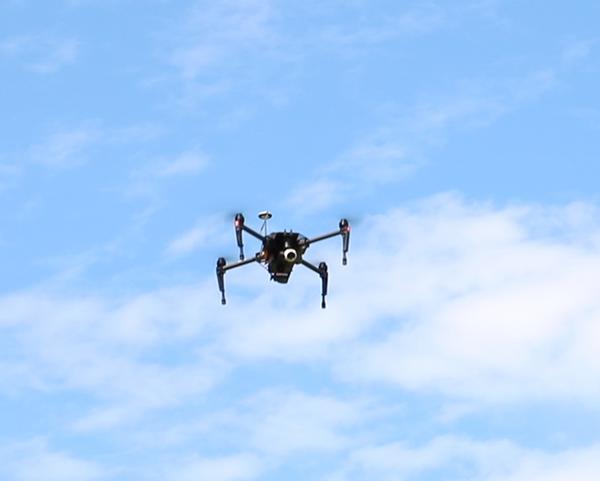
Lace Bugs on Landscape Plants
This week I have seen a couple species of lace bugs active on landscape plants. Yes, there are over …



El inglés es el idioma de control de esta página. En la medida en que haya algún conflicto entre la traducción al inglés y la traducción, el inglés prevalece.
Al hacer clic en el enlace de traducción se activa un servicio de traducción gratuito para convertir la página al español. Al igual que con cualquier traducción por Internet, la conversión no es sensible al contexto y puede que no traduzca el texto en su significado original. NC State Extension no garantiza la exactitud del texto traducido. Por favor, tenga en cuenta que algunas aplicaciones y/o servicios pueden no funcionar como se espera cuando se traducen.
Inglês é o idioma de controle desta página. Na medida que haja algum conflito entre o texto original em Inglês e a tradução, o Inglês prevalece.
Ao clicar no link de tradução, um serviço gratuito de tradução será ativado para converter a página para o Português. Como em qualquer tradução pela internet, a conversão não é sensivel ao contexto e pode não ocorrer a tradução para o significado orginal. O serviço de Extensão da Carolina do Norte (NC State Extension) não garante a exatidão do texto traduzido. Por favor, observe que algumas funções ou serviços podem não funcionar como esperado após a tradução.
English is the controlling language of this page. To the extent there is any conflict between the English text and the translation, English controls.
Clicking on the translation link activates a free translation service to convert the page to Spanish. As with any Internet translation, the conversion is not context-sensitive and may not translate the text to its original meaning. NC State Extension does not guarantee the accuracy of the translated text. Please note that some applications and/or services may not function as expected when translated.
Collapse ▲
This week I have seen a couple species of lace bugs active on landscape plants. Yes, there are over …

For the past several weeks I have noticed damage to the leaves of my roses. Each year this happens and …

False oleander scale, Pseudaulacaspis cockerelli, is a tropical and subtropical pest originally from China. False oleander scale is common throughout …

Imported willow leaf beetle (Plagiodera versicolor) are common on willows in landscapes and natural areas. Most of year adults and …

Crape myrtles are among the most commonly planted trees in the Southeast. The two main pests are crape myrtle …

As part of the Coronavirus Farm Assistance Program, the U.S. Department of Agriculture (USDA) announced that it will provide up …
COVID-19 Viticulture Update 5/22/2020 Wineries can Re-open in North Carolina: Based on new guidance (EO141 Guidance on Bars) issued today on …

Twospotted spider mites are probably the most common spider mite species to damage ornamental plants, fruits, vegetables, and others. Twospotted …

There are a couple species of wax scales (Ceroplastes spp.) in North Carolina. Common ones include Indian wax scale …
COVID-19 Viticulture Update 05/15/2020 News today: Viticulture: V-Credit Webinar organized by the NC Winegrowers Assoc. Monday, June 1, 2020; 10 a.m.–noon It is a …

Tulip trees (Liriodendron tulipifera) have two primary pests both of which produce honeydew and both of which are actively …

Eastern tent caterpillars are common native insects that create silk webs or ‘tents’ in the branch crotches of some …

Nursery growers have been struggling with ambrosia beetles for decades. Now landscape trees are also getting attacked more frequently. …

The Daylily leafminer is a recent pest from Asia. It was first detected in 2006 but has now spread …
COVID-19 Viticulture Update 05/08/2020 New Today: In the Winery: Re’Wine’ing the clock: Webinar with Abby Snyder (Cornell), Beth Chang (VT) and …
COVID-19 Viticulture Update 05/05/2020 News Today: Re-opening drafts from several states: Idaho Wine Commission Seneca Lake Winery Association Tennessee Farm Winegrowers Association Viticulture Webinars: If you …

I got reports of rosy maple moths spotted around lights over the weekend. These beautiful moths are the adult …

Crape myrtles have typically been almost maintenance free (unless you top them) but with the new crape myrtle bark …

This factsheet describes the biology of the cane lace bug or bamboo lace bug, Leptodictya …

This factsheet describes the biology of the banded sphinx moth or lesser vine sphinx, Eumorpha …

This factsheet describes the biology of the elm-grass root aphid, Tetraneura ulmi, and provides residential …

This publication discusses flying unmanned aerial vehicles (drones, model aircraft) for commercial purposes. You'll learn …

This publication reviews research between the late 2000s and the 2020s to explore trends shaped …

This review presents the key steps involved in pruning a mature Carlos vine for maximum …

This vegetable pathology factsheet describes the identification and treatment of anthracnose of pepper.
Effective frost protection methods exist, however, each year, a portion of the state's fruit and …